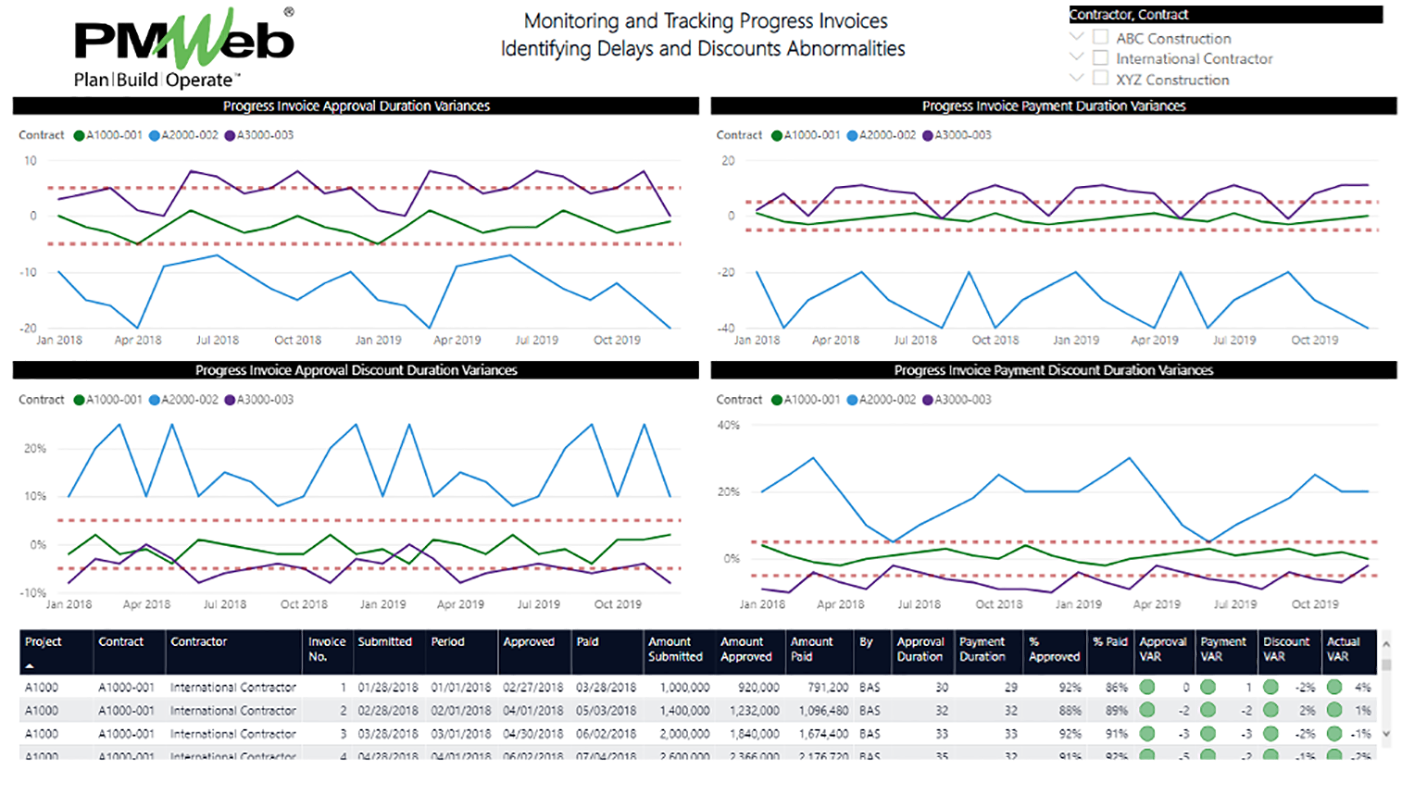No one can deny that the fourth industrial revolution 4.0 (Industry 4.0) will impact all industries including the construction industry. One of the areas that forces the digitization is managing the delivery of capital construction projects. Not only do digitalized business processes improve the efficiency, transparency, and accountability in performing the hundred-plus business processes needed to manage the planning, design, tendering, construction, and closeout stages of capital construction projects, but it also enables capturing the massive volume of wasted data generated from the tens of thousands of transactions and documents associated with those business processes on each capital construction project.
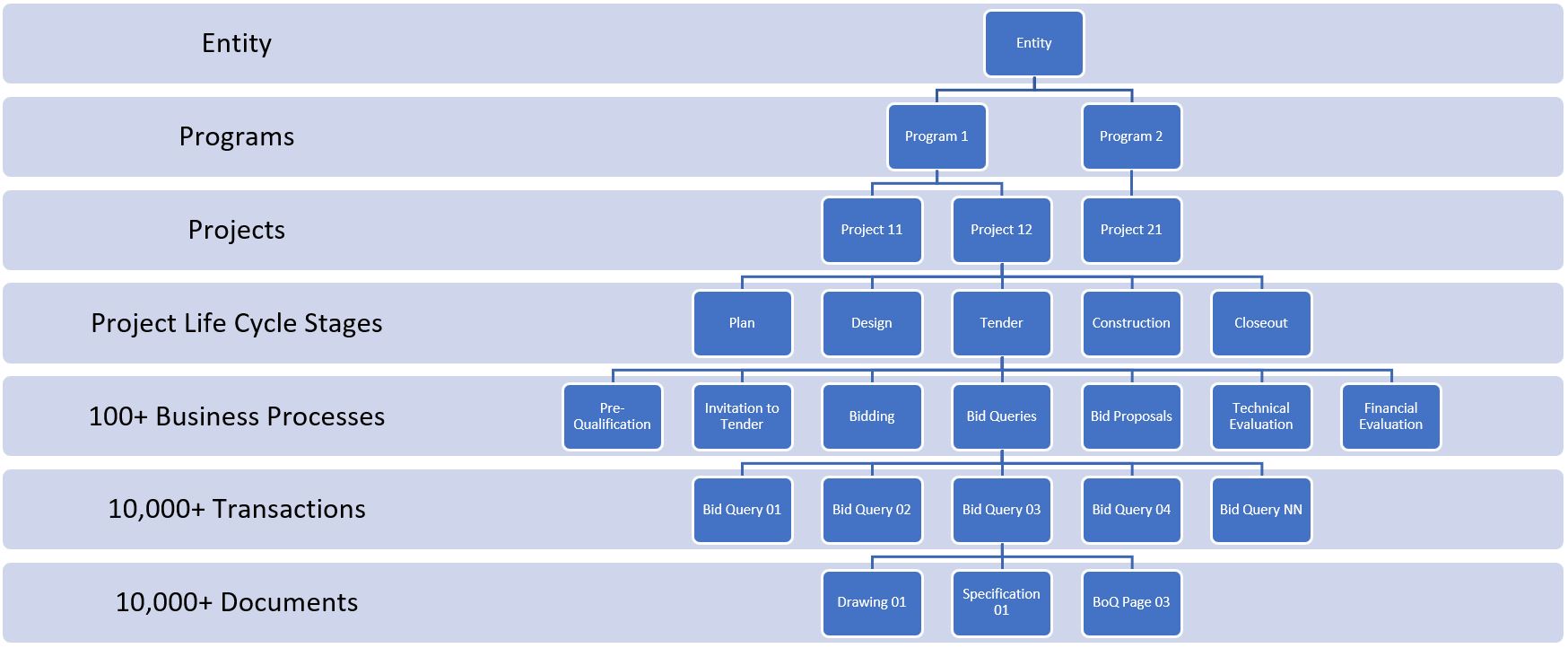
The digitization of managing capital construction projects helps in stopping the many fraud actions that are common to this industry which have a positive impact on reducing the likelihood of cost overrun, lower quality, and delayed completion risks. Using a Project Management Information System (PMIS) solution like PMWeb to automate the hundred-plus business processes needed during the project life cycle stages ensures that all tasks required to submit, review and approve each business process transaction map to the individuals who have been assigned roles for performing those business processes. The workflow assigned to a business process should incorporate all authority approval levels defined in the delegation of authority (DoA) matrix which is an integral part of every project management plan (PMP).The automation of business processes also enables capturing the actual history of each transaction review and approval workflow task. The captured workflow data includes the actual action data and time, done by who, action taken, comments made, and whether team input was requested.

In addition, the digitization of managing capital construction projects enables taking advantage of the massive generated big data from the tens of thousands of transactions and documents exchanged during the project life cycle stages for Machine Learning (ML) and Artificial Intelligence (AI) platforms to provide better predictive, descriptive and perspective analytics.
For each business process to be managed during the project life cycle stages, there is a template to capture all needed data associated with the business process. The type of data fields could be numeric, text, date, Boolean, currency, or even a value from a predefined list of values. Those data fields can also set the conditions for the workflow review and approval tasks. For example, the value for a change order could be the condition that drives the approval authority level for change orders. In addition, permission rights can be set to restrict access to the data fields of each template. PMIS solutions like PMWeb come ready with the templates that are common to most capital construction projects. In addition, it comes ready with a visual custom form builder to enable creating other business processes that might be required to deliver a project. Those templates can be designed in any language including non-Latin languages like the Arabic language.

For each transaction of each business process, there is always the need to attach documents that support the content of what is being communicated. Those documents could be drawings, pictures, specifications, videos, and other types of documents. In addition, there might be a need to add links to other transactions of the same business process or other business processes that are associated or relevant to the communicated transaction. It is highly recommended to add details to each attached document to better explain to the reader what is being attached and viewed. As a best practice, all attached supportive documents, regardless of their type or source, get uploaded and stored on the PMWeb document management repository. PMWeb allows creating folders and subfolders to match the physical filing structure used to store hard copies of those documents.

For business process transactions that need to be formally communicated to the other entities who are part of the project delivery team, output templates need to be designed in a format that is aligned with each project’s branding and communication requirements. Those output templates are designed to include all data fields that need to be communicated including the option of listing the status of the submit, review, and approve workflow tasks and documents attached to the transaction. The output templates can be either saved in PDF file format so they can be digitally signed or printed to be wet-signed and stamped.
PMWeb is one of the few PMIS solutions that comes ready with more than 150 forms, reports, and dashboards that can be immediately used to share the information captured in the business processes managed in PMWeb. Of course, there is also a custom form builder to fully customize those forms, reports, and dashboards to suit each project’s communication requirements.
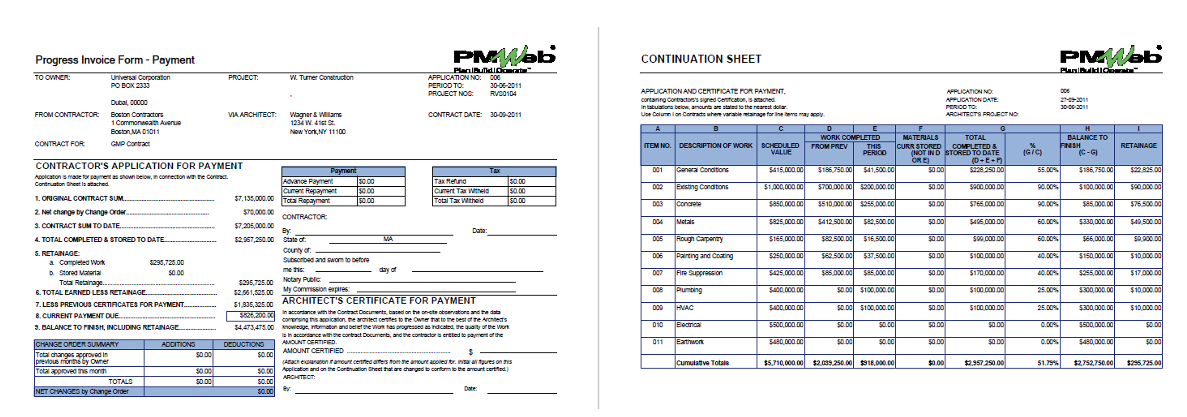
In addition, registers or logs of each business process transaction can be automatically generated and shared with project stakeholders to provide them with a real-time single version of the truth of those transactions. Those reports can be designed to group, sort, summarize and filter the transactions of each business process in the desired form and format. Of course, those reports are designed in a format that is aligned with each project’s branding and communication requirements.
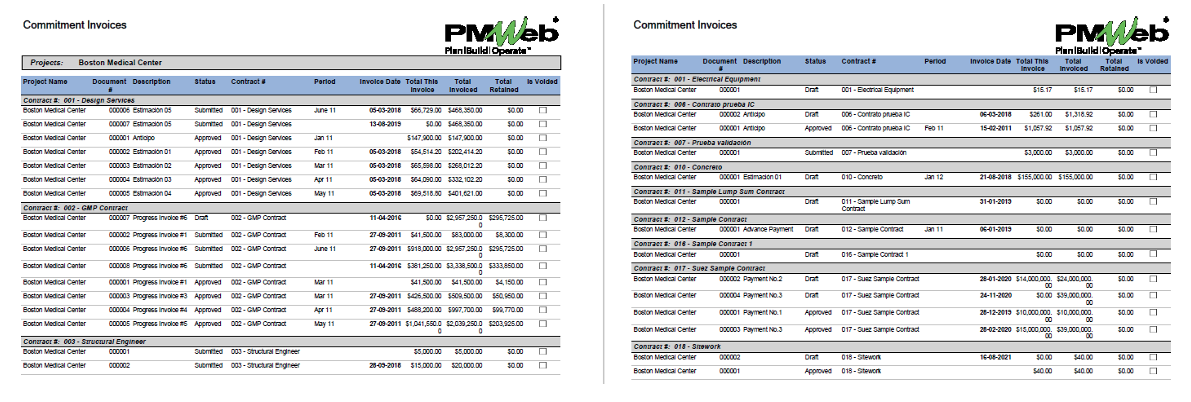
Sometimes, there is a need to generate reports that capture data from transactions of different business processes to provide better insight on certain project management functions. For example, when it comes to reporting the status of contracts for each specific project, there is a need to communicate what was the original awarded contract value, what change orders have been issued to date, what are the approved and pending change orders, what interim payment certificates have been issued to date, what the amount of retainage held on those payments and what the balance amount remaining for each contract. Getting this report requires data from the contract, change order, and progress invoices modules.

Another example would be having a report that provides an overall cost-performance status of all projects that the entity is managing. This requires having a report that groups projects by the program they relate to. Then the cost worksheet report generates using PMWeb modules for budget, budget adjustments, commitments, change orders, and progress invoices. For each project, the report details the original budget, budget adjustments, anticipated budget, awarded contracts, approved change orders, pending change orders, percent to complete, anticipated cost at completion, variance at completion, and actual cost invoiced to date.
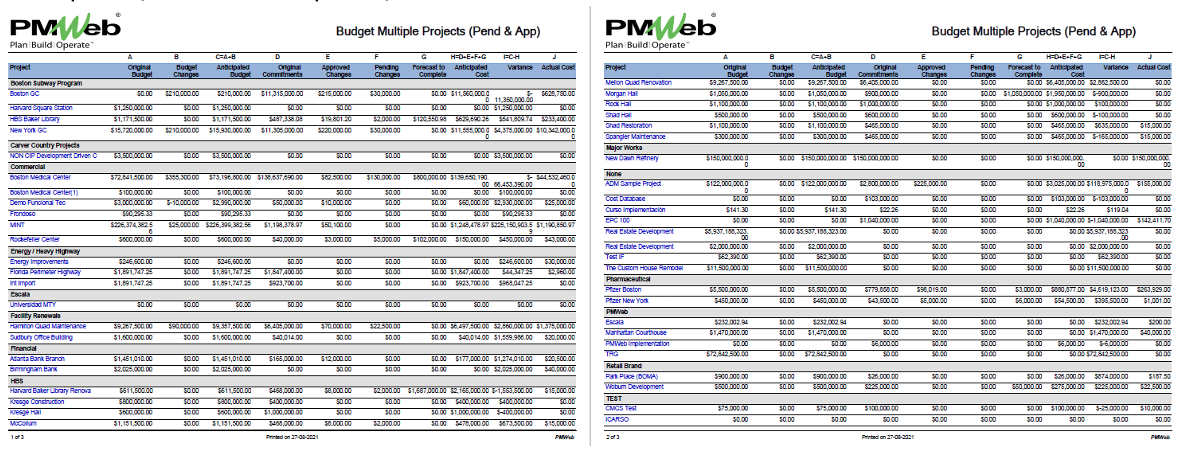
In addition, PMWeb allows users the capability to aggregate and report on the captured data in each transaction of each business process that relates to one of the areas of project management in a graphical format. This is true for cost, schedule, contract, risk, quality, health, safety and environment, procurement, sustainable development, document management, and other data. In other words, users can create different dashboards for each one of those areas to provide stakeholders with oversight of how each project management area is performing.
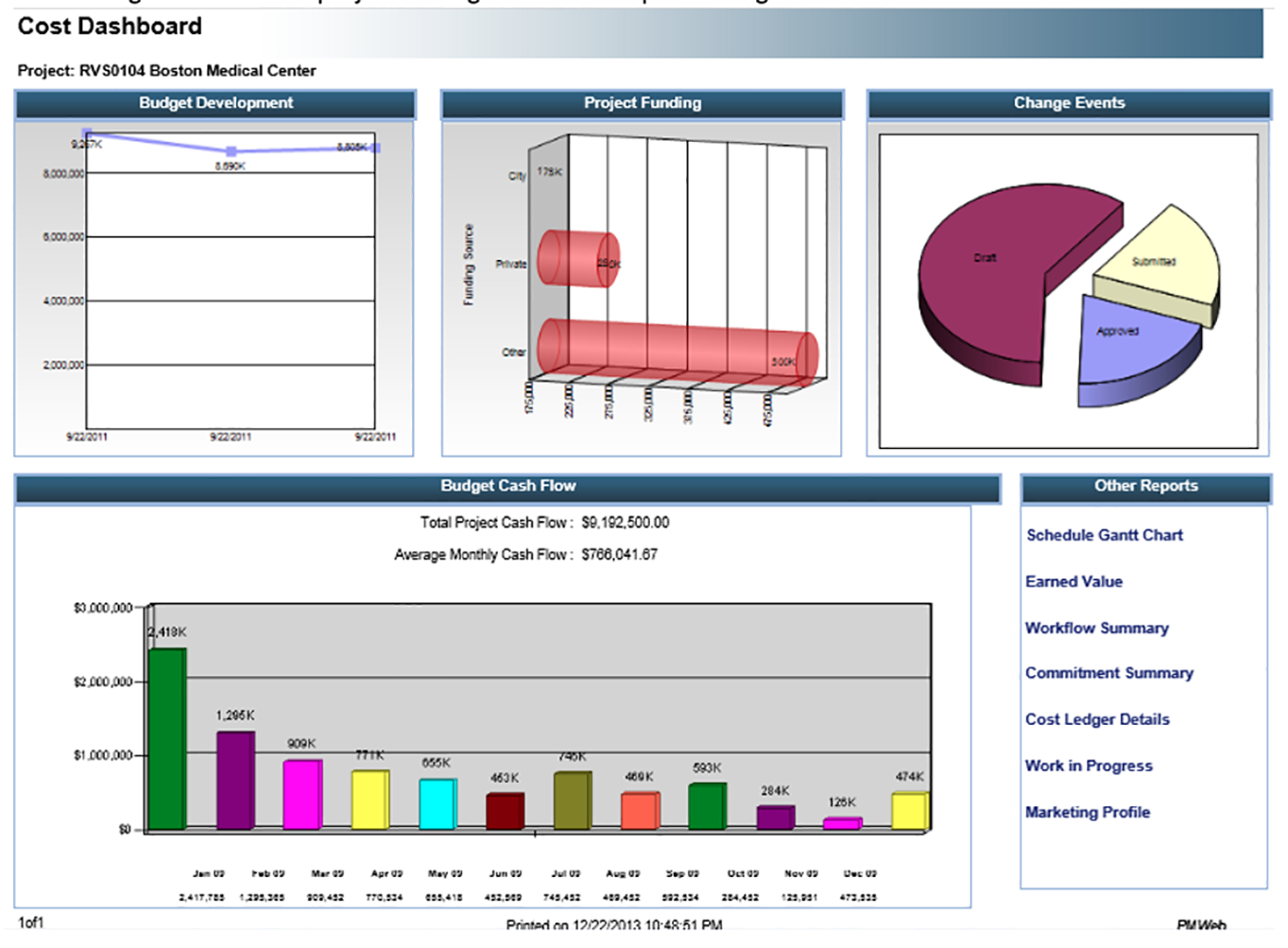
Similarly, users can create a project dashboard to summarize the transactions data of all key business processes so they can be modeled and reported on in a format that provides the needed information in the required format. The reader of the project dashboard can drill down to view other dashboards and reports that detail what is being reported.
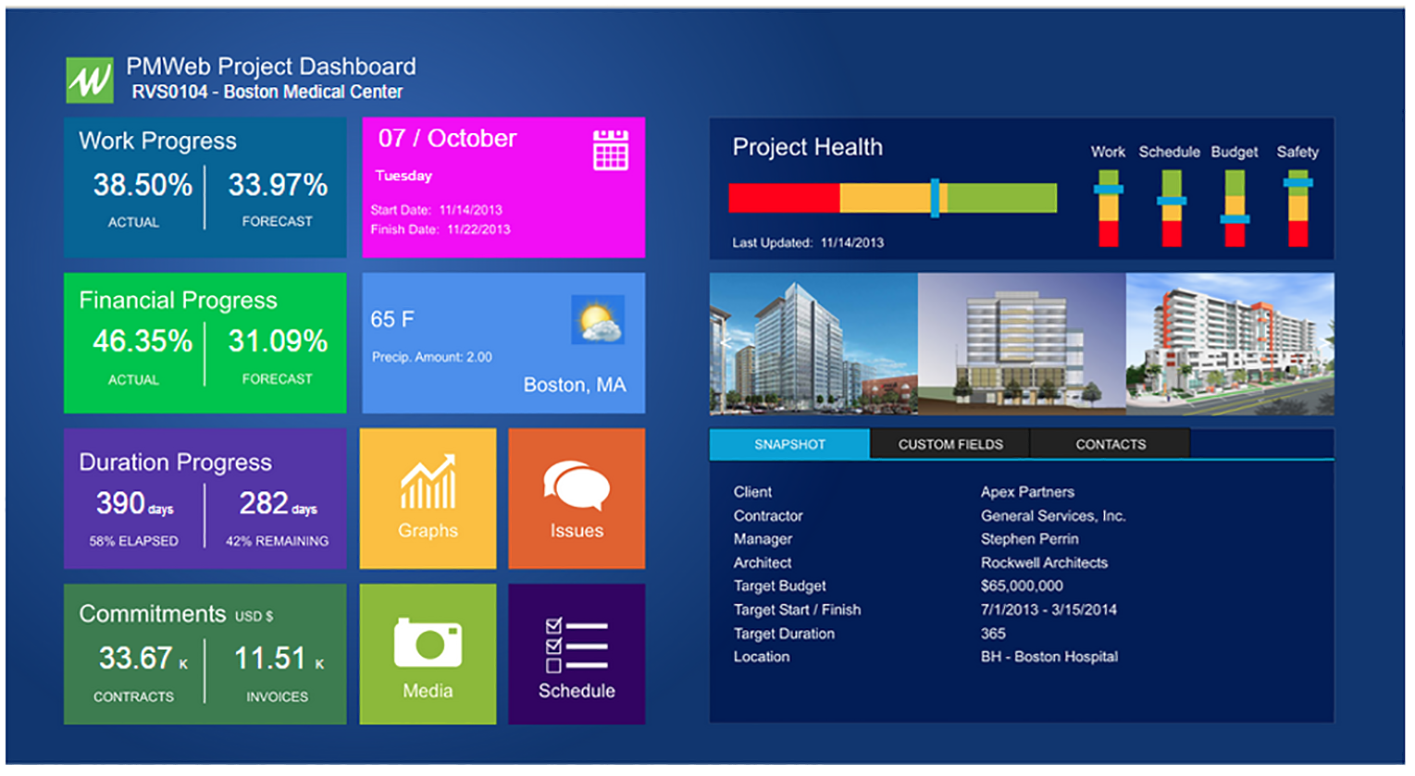
The project dashboard can include pictures of the current project’s status or embed the URL address of the construction site cameras. This provides the stakeholder and in particular those with limited access to the construction sites with a better insight into their capital construction projects’ status.
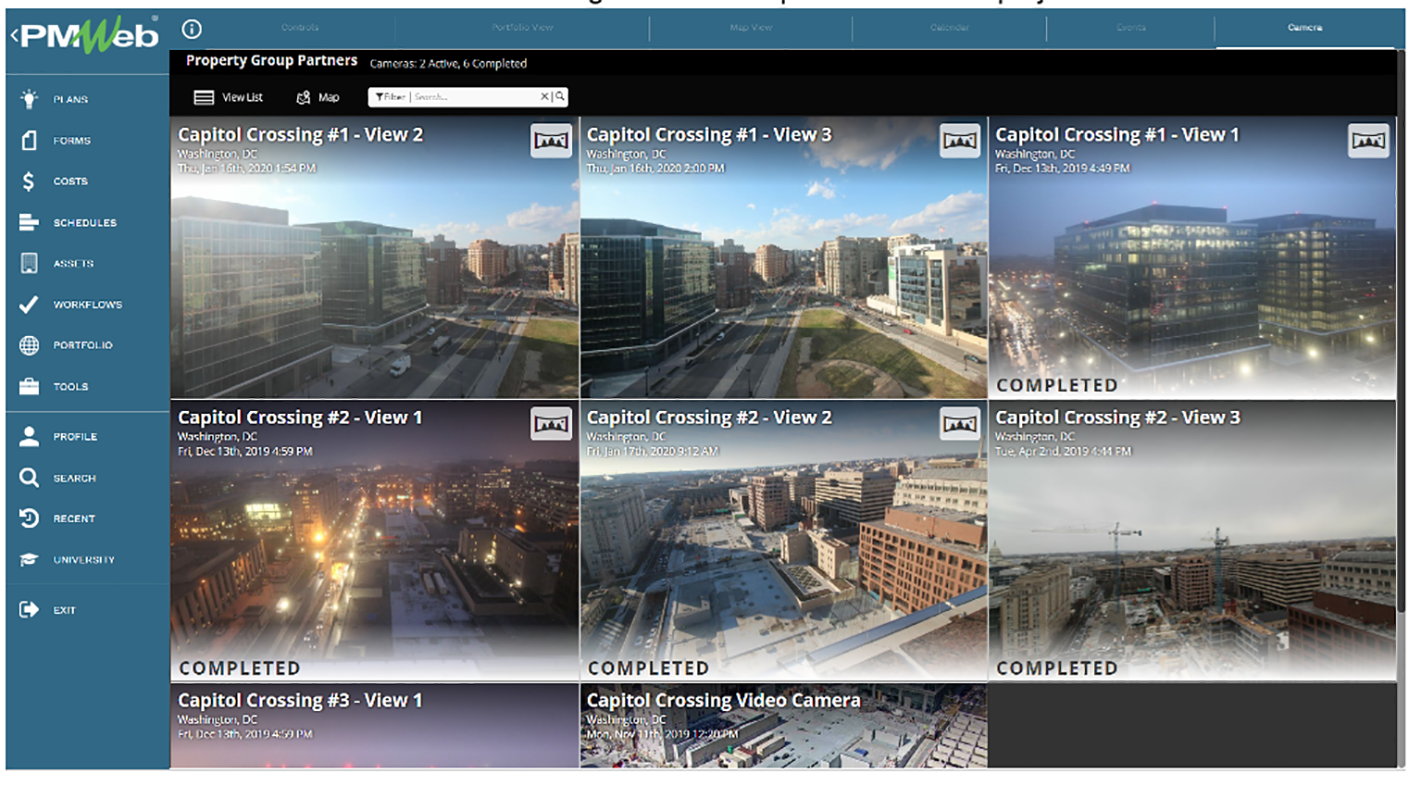
For stakeholders who need to have an overview of the performance status of the complete or selection of their programs and projects, a dashboard can also model and summarize the projects’ data in the desired format and layout. Usually, those portfolio dashboards include a map to detail the location of the projects being reported on.
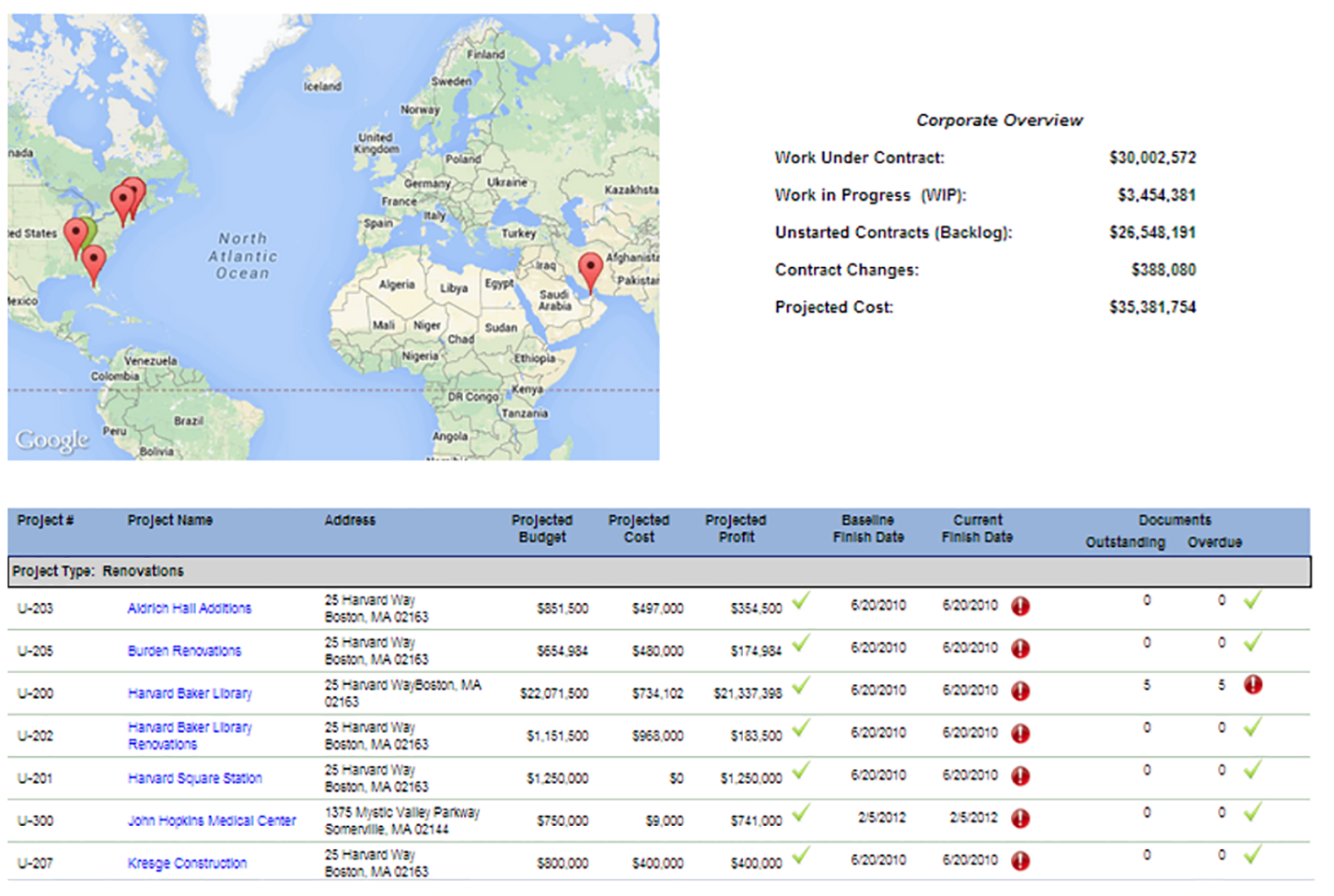
For stakeholders who have the requirement to report and analyze the data captured from the tens of thousands of transactions of the hundred-plus business processes across their complete projects’ portfolio, using business intelligence and data visualization tools like MS Power BI can be configured to access the PMWeb database. This can provide the content for creating such interactive reports. The captured data needs to be modeled and configured in the required format to provide the key performance indicators that are usually required by the different stakeholders.

The value of using business intelligence and data visualization tools like MS Power BI also includes the ability to report on multiple data sources and using advanced graphical visuals to present the information. For example, the fourth industrial revolution 4.0 (Industry 4.0) also focuses on digitizing the design of capital construction projects using Building Information Modelling (BIM). Combining the BIM data and model with the PMWeb PMIS data provides stakeholders with better oversight of the project’s performance status.
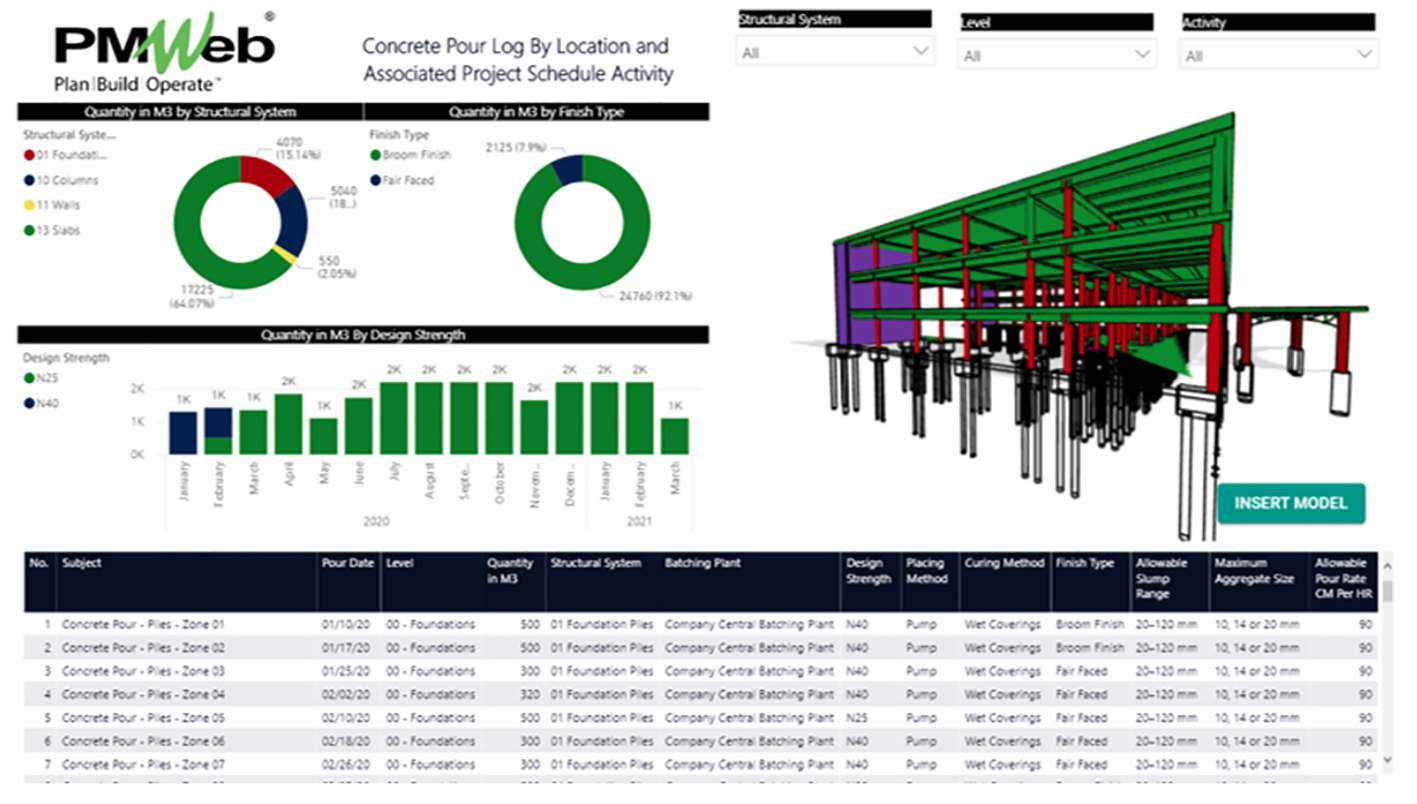
The captured data also provides the trustworthy content needed for the Machine Learning (ML) and Artificial Intelligence (AI) platforms. The analysis of this captured data not only enables having predictive, descriptive, and perspective analytics but also provides those entities with the knowledge on how to improve the management of those business processes to ensure lean and sustainable capital construction projects delivery.
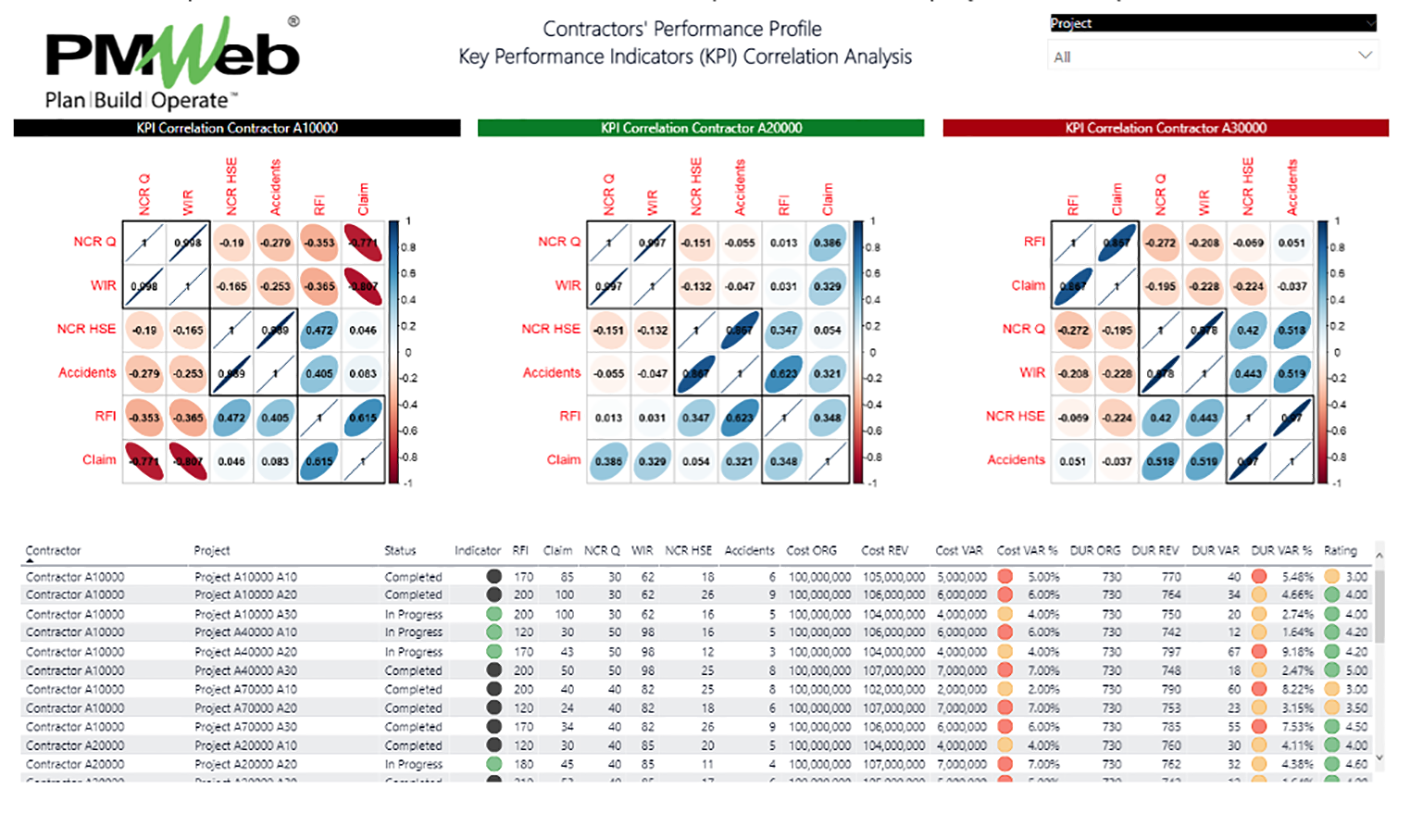
The digitization of the different business processes can also improve detecting and flagging fraud actions and transactions. Unlike creating reports to detect fraud transactions based on the queries required to issue alerts if a fraud action has occurred, Fraud Detection with ML and AI helps to have complete data analysis within milliseconds and detects complex patterns in the most efficient way which can be difficult for those reports and individuals to detect. Digitizing the business processes associated with fraud transactions such as those listed below enables tagging which of those generated transactions had a fraud action and which did not.
- cost estimate
- work inspection requests (WIR)
- material inspection requests (MIR)
- technical submittals
- punch lists
- interim payment certificates
- claim notices
- material alternative submissions
- daily reports
- baseline schedule review
- schedule update review
- weekly and monthly progress reports
- miscellaneous invoices
- non-conformance reports (NCR)
- risk registers
- timesheets
- daily reports
- staff appraisal
